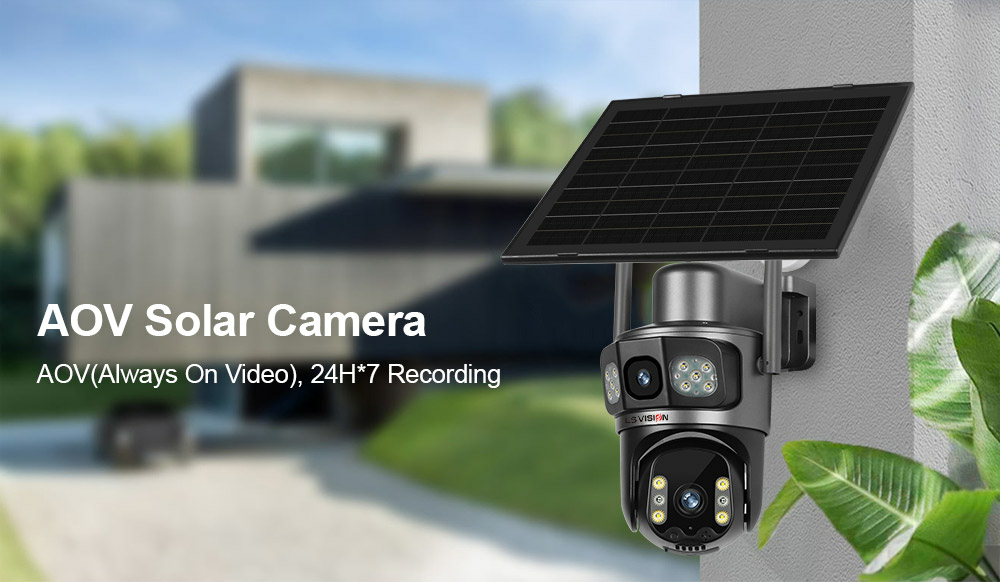Índice
ToggleWith the rapid development of science and technology, solar cameras are increasingly used in the field of security monitoring. Among them, AOV (Always on Video) solar powered video surveillance cameras and low-power solar cameras are two technologies that have attracted much attention. This article will compare the two technologies in detail, and analyze them from the aspects of technical principles, performance characteristics, and application scenarios to help readers understand their advantages and disadvantages more comprehensively.
1. Technical Principles
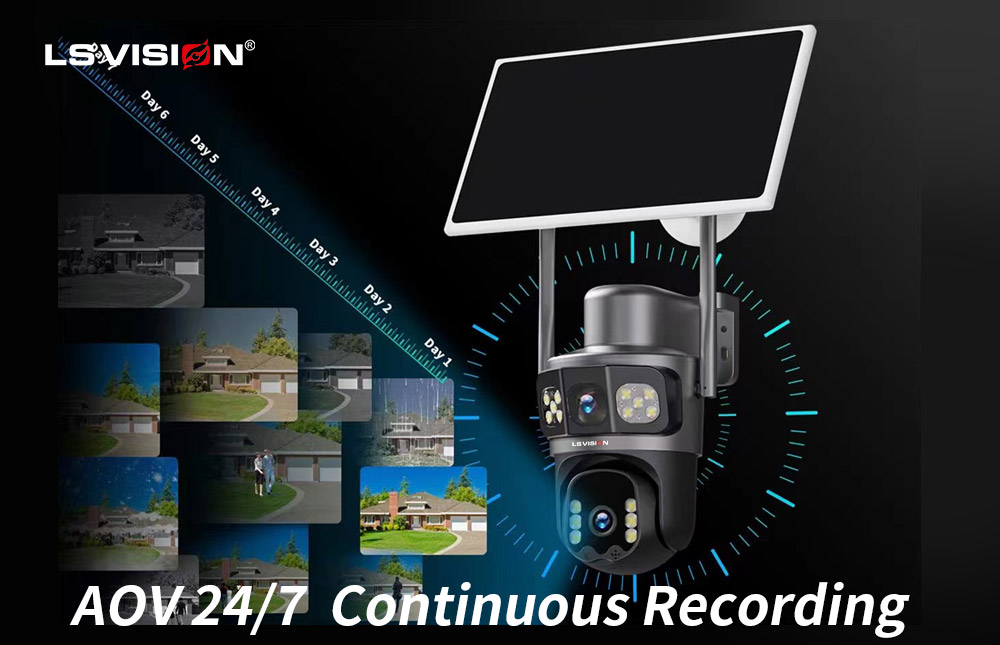
AOV solar powered video surveillance camera adopts advanced AOV (Always on Video) technology. This technology realizes active timing detection through built-in AI algorithm, and can monitor dynamic changes in the scene in real time. AOV of low-power cameras uses a low-frame-rate recording mode to solve the problem of no recording in sleep mode.
AOV allows users to get better full-time recording. With events, it’s high-frame HD, without events, it’s low-frame power saving, more intelligent full-time and continuous recording!
Its full-time recording saves more storage space. Once a specific target, such as a person or a vehicle, is detected, the camera will immediately switch to normal working mode for full frame rate recording and real-time video streaming. When no target is detected, the camera enters low-power standby mode, greatly reducing energy consumption. This technology not only improves the efficiency and accuracy of monitoring, but also greatly extends the service life of the camera.
AOV solar powered video surveillance cameras also have excellent image quality and night vision. It uses high-definition image sensors and advanced image processing algorithms to provide clear and stable monitoring images both during the day and at night. Especially in low-light environments, the camera can still maintain bright colors and clear details, truly achieving a monitoring effect that is as bright as day at night. This function enables AOV solar cameras to play an excellent security role at night.
Low-power solar cameras pay more attention to energy saving and standby time. They usually use PIR (passive infrared) technology to trigger recording by detecting mobile heat sources. This technology can achieve monitoring without sacrificing too much power, but due to the limitations of PIR technology, there may be risks of missed reports and false alarms. In addition, low-power cameras cannot record in standby mode, and there is a certain time difference between waking up and normal recording mode, which may affect the real-time monitoring.
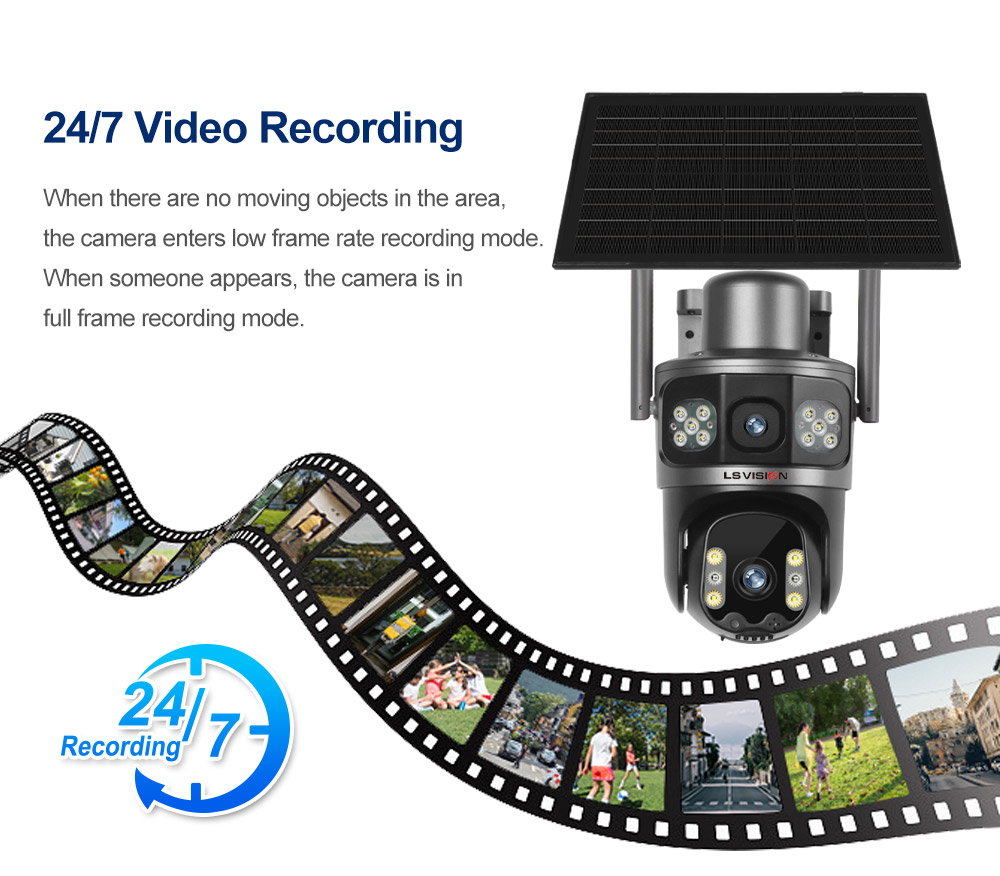
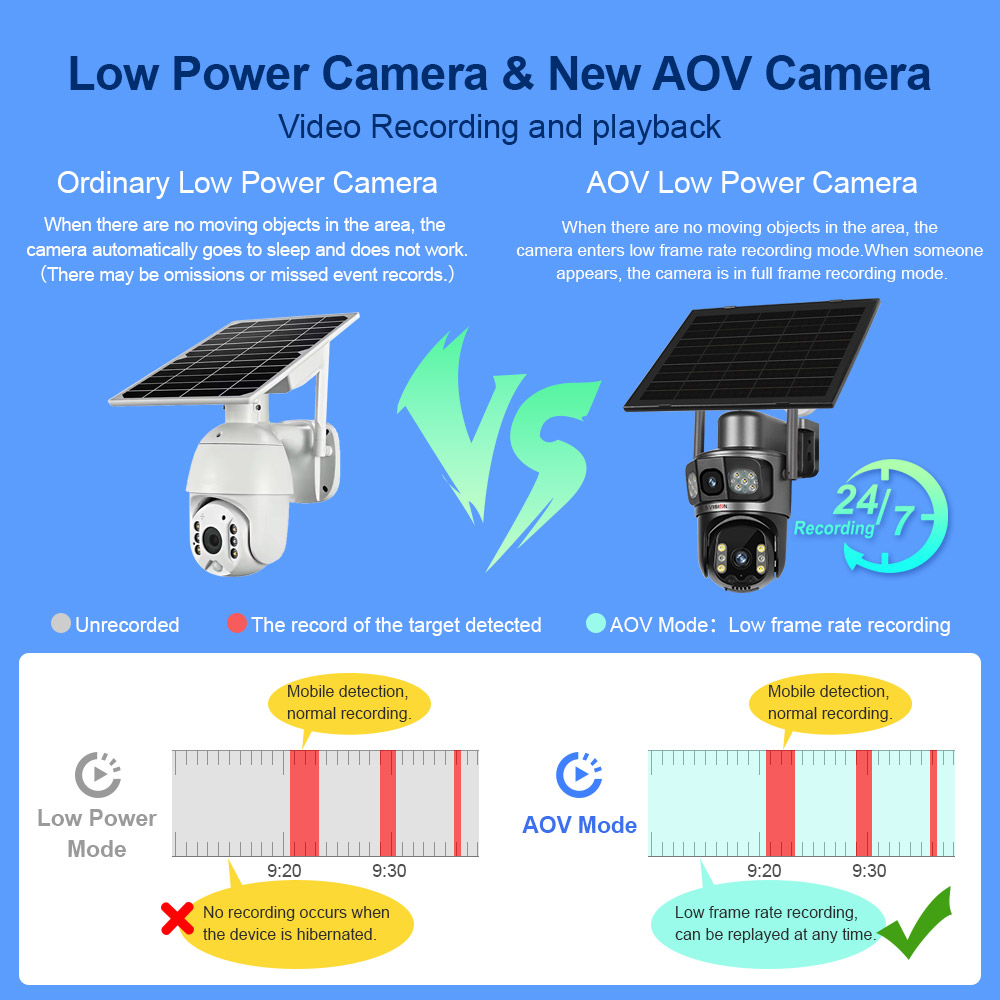
2. Performance characteristics
(1) Real-time monitoring: AOV camera can achieve real-time, high-definition video recording to ensure the safety and reliability of the monitoring scene.
(2) Intelligent identification: Through the built-in AI algorithm, AOV camera can intelligently identify specific targets in the image to improve the accuracy and efficiency of monitoring.
(3) Strong environmental adaptability: AOV camera can automatically adjust parameters according to ambient light to ensure clear images under various lighting conditions.
(4) 24-hour uninterrupted recording: AOV camera adopts active timing detection technology to achieve 24-hour uninterrupted recording to ensure the continuity and stability of monitoring.
(1) Energy saving and environmental protection: Low-power camera adopts energy-saving design to reduce energy consumption and reduce pollution to the environment.
(2) Long standby time: Low-power camera can greatly extend the standby time by optimizing circuit design and adopting low-power components to meet the needs of long-term unmanned monitoring.
(3) Fast wake-up speed: Low-power cameras can be quickly awakened and enter working state when a moving object is detected, ensuring the timeliness of monitoring.
3.Application scenarios
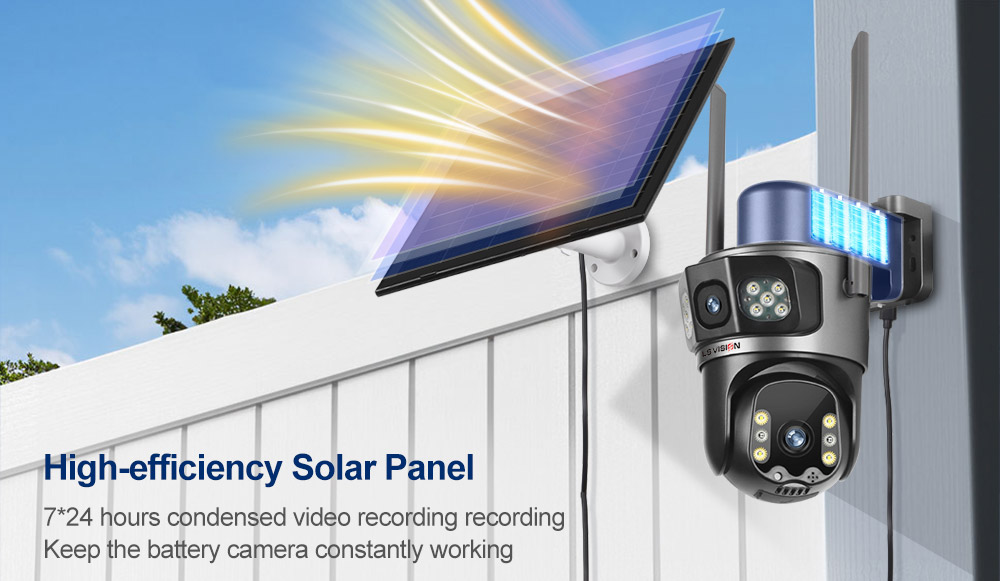
AOV solar powered video surveillance cameras are more suitable for scenarios with high requirements for real-time and accuracy of monitoring, such as banks, shopping malls, and major traffic arteries. These scenarios require the camera to respond quickly and record important events to ensure safety.
Low-power solar cameras are more suitable for scenarios with high requirements for energy saving and standby time, such as remote areas and outdoor environments. These scenarios usually cannot provide a stable power supply, so the camera needs to have a longer standby time and lower power consumption.
AOV solar powered video surveillance cameras and low-power solar cameras each have their own characteristics and advantages, suitable for different application scenarios. When choosing, you need to make a comprehensive consideration based on actual needs and choose the product that best suits you.
Please don’t hesitate to send your inquiry to us. Welcome your email or call or direct online contact.
Contact: Jennie Yang
Mobile/WhatsApp: +86 13682518930
Correo electrónico: sales09@lishigroup.com
Skype: sales09_107
